These are quick reviews of the stuff that didn’t make it to the next update. These reviews did not end up being all that stellar, nor was the material they were about in any way enduring, so they’re here for posterity — and search engines, in canse anyone is trying to do their Christmas shopping in February.
Black Crucifixion – Faustian Dream
This gothic heavy metal has some black metal stylings, but is about 75% Saint Vitus and 25% Gehenna. The rest is pure gothic rock with dramatic vocals, jaunty rhythms offset against doomy choruses, and all of the theatrical aspects you would expect. It is very simple and composed like rock music with a fixed harmonic frame of reference, and almost no phrasal riffs, but it’s not bad in that context although this style drivers your reviewer to hide under toilets. I’d infinitely prefer this total lack of hiding one’s inner goth to the artifice of trying to be as “hard man metal” as possible to disguise one’s inner eurotrash artfag. Still, I’ll never listen to it again.
Demonical – Servants of the Unlight
The first track on this CD struck me as interesting; it seemed to be evading its own conclusions, and so twisted itself into a sigil and then expanded upon it. It had a Middle Eastern-sounding melody and plenty of atmosphere. After that, the album degenerated into sped-up second-album Grave styled material with a few modern twists but mostly really predictable battering repetition that it seems to relish. If your short term memory is destroyed and you’re relearning to walk, this might be a great CD, but otherwise, get me away from here.
Earthless – Rhythms From a Cosmic Sky
The merger of doom metal into stoner doom/70s jam takes this genre back — in a disappointing way. We’re back at stupid rock music here, complete with the reliance on offbeat to make a rhythm even vaguely memorable, and the spongy way in that these bands noodle around repetitive series of similar patterns of notes, sounding “complex” only to those who have no idea what a scale is. Having no real content, they substitute with all sorts of annoying rhythmic flourishes and layering of instruments, as well as more bubbly drooling soloing. This has nothing to do with metal or anything but amusing the slower learners.
Equinox – demo 1994
If you like slightly cruise-y gothic death metal, this demo provided an interesting jumping-off point, perhaps similar to a more proficient Goatlord. Its rhythms are seductive but easy and so never go anywhere; it’s verse chorus with a few digressions, but otherwise falls into song format. Think Sisters of Mercy doing a doom/death take on Obituary. It’s not particularly bad, and has at least one really solid riff per song, but doesn’t add up to much interest for death metal fans.
Eschaton – Causa Fortior
Of all the trvlt — that’s an abbreviation for trve kvlt — releases out there, this one stands out not at all. Not one goddamned bit. Yes, vicious playing and fast rhythms, sort of like Discharge with more practice. And the melodies? Kind of candy, if you ask these ears, and definitely predictable. Song structures? Follow the development of the main riff through two cycles, one barely getting any airtime. End result: why bother?
Basilisk – A Joyless March Through the Cold-Lands
We’d all love to like this because it has all the elements of second-wave black metal: the Abigor/Emperor melodic drilling, the Abyssic/Negura Bunget vamping slow-strummed drift, and finally the Impaled Nazarene/Zyklon-B chaotic blasting. But it adds up to a whole lot of riffs we heard in the late 1970s with hardcore bands, and they don’t congeal into songs, more like an aggregate: when it’s left over, you’re looking for something or anything to really change. This is too predictably “safe” to be black metal.
Disillusion – Back to Times of Splendor
Great name, awful band. When impetus is lost, people revert. In this case, it’s like a cross between Sentenced and a metalcore band: fast, neurotic riffs that change randomly, then guitar trills and melodic rhythm leads, all in song structures as predictable as cereal commercials. Bands like this convert metalheads to religion just for the better music.
Anti-Cimex – Criminal Trap
Punk is so basic you don’t really need much to differentiate bands. This sounds like an uptempo Discharge with more conventional verse/chorus song structures and more rock/blues leads. Other than that, it’s about what you’d expect. I’d rate it among the top 20 punk bands, but you really have to love repetition to listen to this. I don’t care anymore.
Delve – The Dead Amongst
Imagine a cross between Slaughter Lord, early Grave and Grotesque: dynamic neo-war-metal riffs clashing at high speed and ramming into catchy choruses, with lots of fast drum work and messy guitar playing. The problem is that such a monolith approach ends up becoming predictable and boring after just a few listens.
Trimonium – Of warriors and heroism
Easily one of the more professional bands out there, Trimonium take the formula adapted on the first The Abyss album and wrap it around what is at its heart the kind of boisterous, melodic, bounding material that we find on power metal albums. Thoroughly professional in composition and playing, it is nonetheless the work of experienced musicians who are designing self-satisfying melodies like those of jingles, but in a style that bonds folk music with the bouncing exuberance of soundtracks to pirate movies.
Ender – Ender
There are those who make progressive rock by thinking of an idea, and then ad hoc-ing song structures and ideas to make it work. There are others who look at progressive rock and make a variation of it so they have an iron in the fire. This CD is sadly the latter, because it has potential. Crossing the later prog-punk and emo sound with atmospheric progressive rock, Ender make a very pleasantly floating musical tapestry that also means nothing, other than a manipulation of emotions in themselves, which creates a gentle transition between related feelings with no sense of broader significance. As a result, it’s a lot like watching a commercial for AIDS medication.
Epitaph – Seeming Salvation
Bad heavy metal that resembles Candlemass in its squirrely guitar leads, this CD seems to think because it has a bassy whisper of death metal vocals that it should be death metal. It should not be. Every musical element serves the production of songs that use heavy metal rhythms, aesthetics, song forms and content as their inspiration. Like many bands who make this mistake, Epitaph must be nuts to do it, since if they dropped the death vocals and got quality production, they would have met moderate success in any decade from 1974 onward.
Vociferian – Beredsamkeit
Nu-blackmetal can go a few different ways, and one is the candy of pure melodic sound. That’s what we have here. Through a combination of tuning, melodic intervals and sustain-heavy distortion, this band creates a wave of melodic sound — the affinity of notes for large gaps — without deviating from the basic melodic patterns of pop. It’s an engaging listen, but doesn’t last. If they want to gain real power, they’ll create songs about an idea and wrap the melodic riffs around that.
Athos – Crossing the River of Charon
Like most post-1996 black metal, this perfectly capable release is boring because it’s easy to anticipate and it focuses too much on trying to re-create the “black metal mood,” instead of like the great bands capturing the process leading up to it. There’s no way to nitpick; nothing is wrong except the CD taken as a whole.
Vorum – Grim Death Awaits
This appears to be a melodic speed metal album hidden with a black/death hybrid. The songwriting resembles something that would have come out of a Destruction/later Nuclear Assault hybrid, but it’s tricked out in aggressive rhythms and very basic riffs, with the high intensity chaos brought on by people hitting too many strings, drums and vocal chords at once. Thoroughly not bad but also probably not interesting to those who are more interested in an old school death metal/black metal style.
Arsis – We Are the Nightmare
This is a musical nightmare. Glam/hard rock style twee choruses between dramatic, bouncy blockhead speed metal riffs. Above it a voice howling, then a melodic riff and some fast drumming, all overproduced so it hits really hard and then beats you to death with repetition. CDs like this drive people to apocalyptic religions.
Vulture – Easier to Lie
From the Manilla Road meets Exodus school of choppy speed metal, Vulture make an interesting and experimental album with vast holes of idea in which are filled the dreaded Pantera-style catchy bounce riffing that goes nowhere because it has almost no harmonic motion. Some of the experimental stuff is intriguing, as it crosses low-tech rhythm guitar with jazz drumming and interesting lead guitar that drops into rhythm guitar figures when convenient to emphasize a change in backdrop. I like it, but it flags in intensity, so makes for an uneven listening experience in a style I abandoned years ago.
Vomit the Soul – Apostles of Inexpression
Would it be wrong to guess that this style of music is very subtly influenced by rap? The semi-recursive rhythms of the chortling, gurgling, guttural muffled shout vocals suggest a technique similar to rap. The riffing is glorified, via Suffocation, speed metal percussive strum but falls into that use of minimal melodic motion to make a nice bouncy groove into which they can drop build-ups, break-downs and even more, lots of chortling. It’s genre-typical: competent, not bad, but well past the glory years of this genre and probably only about half as interesting as a later Deeds of Flesh album.
Denial – Catacombs of the Grotesque
Another forgettable band, for all their technical skill in integrating the memes and techniques of twenty years of death metal into a single album. These songs lack subtlety because that they want to express is not subtle, and even more, does not expand from the initial appearance. They adopt from Krisiun the power-blasting technique of full speed ahead drums, with pauses to divide riffs, creating an overwhelming sense of motion even when little corresponds between riff and percussion. These are songs about violent destabilization and in the process of expressing that, they destabilize themselves into chaotic collections of riff unified by rhythm and vocals but expressing little other than a self-satisfied chaos.
Vermis – Liturgy of the Annihilated
Imagine early Grave with greater instrumental ability and a propensity to use Entombed-style slower melodic passages between the storming chords of thunderous rage. This is roughly where Vermis stands, with a few updated stylistic elements, and less of the flowing tremolo of older death metal so much as fast chord changes like a metal-stamping machine. If anything, the habit of picking a progression and working it through basic harmony split into three riffs wears old after a few songs, but not in a tragic way, such that if this band were able to pack more variation into their work, they’d have a killer. Probably especially appealing to fans of KAAMOS, NOMINON and REPUGNANT.
Coffins – Buried Death
Resembling a stoner doom band as executed by early Grave, this death metal act offer us no complexity and very little variation between songs, but they make them engaging and easily heard owing to their familiar rhythms that resembling walking, wrestling and other human activities. The chord progressions alternate between chromatic and comfortable hard rock intervals, giving this an over-the-top feel as if somehow Cinderella, Poison or AC/DC wandered through hell and came out chaotic. While none of it is offensive, and everything fits and feels second-nature, this CD also doesn’t do anything exceptional so it fades very quickly into the background. It gets an A++ for stylistic concerns, and a C- for content.
Unexpect – In a Flesh Aquarium
Progressive rock presents difficulties in tying together larger songs in a way that makes sense. If you want to take a shortcut, take a very basic song and trick it out, aesthetically. Add some fast scales to that riff; layer some voices; use a weird instrument; use strange time changes. Write a melody that is awkward or diminished, use relative scales. All of this can dress up a very basic song into something sounding quite complex that, when you sketch it out on a whiteboard or equivalent, is basically a pop song. Fans of Maudlin of the Well — if they played really fast with female and male vocals competing and Renaissance Fair style quasi-medieval melodies twisted into modern, almost grunge form — would like this mess, as will people who like constant distraction carnival music like Mindless Self Indulgence. For this reviewer, it’s an old dog still trying old tricks without having much to say.
No CommentsTags: anti-cimex, Arsis, athos, basilisk, black crucifixion, coffins, delve, demonical, denial, disillusion, earthless, ender, epitaph, equinox, eschaton, sadistic metal reviews, trimonium, unexpect, vermis, vociferian, vomit the soul, vorum, vulture


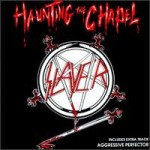 Showing a strong advancement in technique and an evolution towards a darker style that would be the staple of records to come by the band, Slayer throw off the camp shackles of their excellent first album, and give a more progressive approach to songcraft yet give more emphasis on repetition within individual riffs. The violent droning guitar timbre of Discharge makes itself ever more present whilst the musical language of Judas Priest and Angel Witch works itself within those patterns. The dissonant twin soloing of King and Hanneman is more suitable to this new direction also, whilst Lombardo’s aggressive battery finds more cohesion in using less variation and being more of an ambient backdrop than before, with Araya’s unmistakable rasp encoding itself sadistically within the depths. A bleak affair that summed up the apocalyptic meanderings of the speed metal movement and the embryonic beginnings of the death metal that was yet to manifest. -Pearson
Showing a strong advancement in technique and an evolution towards a darker style that would be the staple of records to come by the band, Slayer throw off the camp shackles of their excellent first album, and give a more progressive approach to songcraft yet give more emphasis on repetition within individual riffs. The violent droning guitar timbre of Discharge makes itself ever more present whilst the musical language of Judas Priest and Angel Witch works itself within those patterns. The dissonant twin soloing of King and Hanneman is more suitable to this new direction also, whilst Lombardo’s aggressive battery finds more cohesion in using less variation and being more of an ambient backdrop than before, with Araya’s unmistakable rasp encoding itself sadistically within the depths. A bleak affair that summed up the apocalyptic meanderings of the speed metal movement and the embryonic beginnings of the death metal that was yet to manifest. -Pearson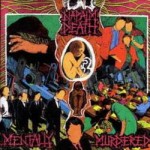 This work is like a convergence of Napalm Death and Carcass, having left From Enslavement to Obliteration and Reek or Putrefaction behind in order to expand on their styles, towards Harmony Corruption and Symphonies of Sickness respectively. By Napalm’s standards, at this point in their discography, these songs are quite lengthy and structured with an attention to detail that recaptures the subtle shifts in mechanical motion of the earliest side to Scum. This technique is re-invigorated by the cleaner production, relegating the extremity of fuzzy bass for the sake of a twin-guitar assault that creates an hypnotic and delusional sensation, and shows the input of Jesse Pintado who would go on to record another highly influential work of Grindcore – Terrorizer’s World Downfall. Composition is practically freed at very the earliest moments of songs onwards, unlike previous Napalm Death albums where these parts were used to establish exactly which single riff will become immersed in a barely discernable anarchic explosion for the rest of the 30 seconds of music. Instead, it’s given a more Death Metal treatment, e.g. in ‘The Missing Link’, the opening riff seems to degrade over time into smaller grinding patterns until the fragments are juggled like sacks of meat by morbid Death Metal riffs. This is where some of the tremelo melodies that would tear through the rotten wall of sound of Carcass finds its place, accompanied by the mocking lead guitars of Bill Steer. The human tornado, Mick Harris is even more precise than his previous effort, but doesn’t lose any of his epithet’s justification. Lee Dorrian’s vocals become more guttural and undecypherable, conceding to the futility of mainstream political discussion. The seeds of an approach closer in line with the burgeoning interest in Death Metal were sown here, simultaneously taking Grindcore one step further away from reaching the dead-end of short and simplistic outbursts of truncated riffs and hollow statements. -ObscuraHessian
This work is like a convergence of Napalm Death and Carcass, having left From Enslavement to Obliteration and Reek or Putrefaction behind in order to expand on their styles, towards Harmony Corruption and Symphonies of Sickness respectively. By Napalm’s standards, at this point in their discography, these songs are quite lengthy and structured with an attention to detail that recaptures the subtle shifts in mechanical motion of the earliest side to Scum. This technique is re-invigorated by the cleaner production, relegating the extremity of fuzzy bass for the sake of a twin-guitar assault that creates an hypnotic and delusional sensation, and shows the input of Jesse Pintado who would go on to record another highly influential work of Grindcore – Terrorizer’s World Downfall. Composition is practically freed at very the earliest moments of songs onwards, unlike previous Napalm Death albums where these parts were used to establish exactly which single riff will become immersed in a barely discernable anarchic explosion for the rest of the 30 seconds of music. Instead, it’s given a more Death Metal treatment, e.g. in ‘The Missing Link’, the opening riff seems to degrade over time into smaller grinding patterns until the fragments are juggled like sacks of meat by morbid Death Metal riffs. This is where some of the tremelo melodies that would tear through the rotten wall of sound of Carcass finds its place, accompanied by the mocking lead guitars of Bill Steer. The human tornado, Mick Harris is even more precise than his previous effort, but doesn’t lose any of his epithet’s justification. Lee Dorrian’s vocals become more guttural and undecypherable, conceding to the futility of mainstream political discussion. The seeds of an approach closer in line with the burgeoning interest in Death Metal were sown here, simultaneously taking Grindcore one step further away from reaching the dead-end of short and simplistic outbursts of truncated riffs and hollow statements. -ObscuraHessian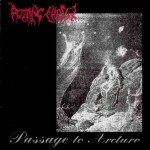 Warm, playful and overflowing with the abundance of inspiration in the rediscovery of ancient shamanic techniques of mystical metal creation, the Greek pioneers of Rotting Christ forsook the aggravated modern noise of grindcore in time to ride the wave of blackness that usurped the European metal underground. Remnants and glimpses of 80’s fast modern metal (Slayer) give way to an astral, luminous intensity of synthesizers and slowly picked melodies that suspend the themes for a moment to enable the mind to stop wandering and relish the unholy moment of concentration, in a yogic gesture of blackness. Few have ever used the crushing sonic world of black and death metal to so fully immerse in ethereal ritual, and such rare examples as Drawing Down the Moon preserve plenty of subtle reminders to this widely heard classic of European black metal. As their chaotic exhortations in countless zines of the period conclude, Rotting Christ’s hybrid of gothic and black metal aimed for an architecture of the infinite, regal sunsets of lost kingdoms whose landscapes are not for the eyes of mortals, except in dreams and in death. As “Forest of N’Gai” aptly proves, black metal was at its height when not contorted to fit the schemes of a political ideology or an orthodox Satanist movement, but like the great works of literature a realm of fantasy of its own whose symbols are rooted in our deepest unconscious fears and desires. This sub-space can then be used by the analytical mind to figure the patterns of generation for a multitude of creative, even lunatic, concepts. -Devamitra
Warm, playful and overflowing with the abundance of inspiration in the rediscovery of ancient shamanic techniques of mystical metal creation, the Greek pioneers of Rotting Christ forsook the aggravated modern noise of grindcore in time to ride the wave of blackness that usurped the European metal underground. Remnants and glimpses of 80’s fast modern metal (Slayer) give way to an astral, luminous intensity of synthesizers and slowly picked melodies that suspend the themes for a moment to enable the mind to stop wandering and relish the unholy moment of concentration, in a yogic gesture of blackness. Few have ever used the crushing sonic world of black and death metal to so fully immerse in ethereal ritual, and such rare examples as Drawing Down the Moon preserve plenty of subtle reminders to this widely heard classic of European black metal. As their chaotic exhortations in countless zines of the period conclude, Rotting Christ’s hybrid of gothic and black metal aimed for an architecture of the infinite, regal sunsets of lost kingdoms whose landscapes are not for the eyes of mortals, except in dreams and in death. As “Forest of N’Gai” aptly proves, black metal was at its height when not contorted to fit the schemes of a political ideology or an orthodox Satanist movement, but like the great works of literature a realm of fantasy of its own whose symbols are rooted in our deepest unconscious fears and desires. This sub-space can then be used by the analytical mind to figure the patterns of generation for a multitude of creative, even lunatic, concepts. -Devamitra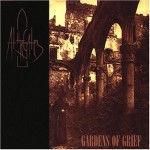 The original Gothenburg gloomy melody cult made one of their strongest statements on this early EP, pressed from demo to vinyl on the first year of the band’s existence. Fresh from life disrespecting bands such as Infestation and Grotesque, these Swedes nail the most desperate guitar harmonies since Candlemass, but infect them with the viral sensibility of a flux of death current. As if plugging the Sunlight Studios into your brains in direct interface, Svensson’s tremolos rip and rend mercilessly apart the soul of the beast that dared expose its true feelings of living in a world of hypocrisy and uncertainty. The band has preserved the most fragile moment of the Swedish death metal underground, the precarious balance between the catatonic psychosis of headbanging under alcoholic influence and the deep, burning, thoughtful soul of an encrypted Romantic in a world of pain and disguised memories. It all takes such tangible form in Tomas Lindberg’s cracking, maddened scream: “I am at the gates – Lord of Chaos – Let me sleep”. The fear and anger of At the Gates’ most revered albums will always remain something that divides audiences according to their response to such emotional cues, but “Gardens of Grief” is the un-terrorized, exuberant sound of youth that realizes the presence of death and dives into it headlong, appropriate to the Per Ohlin dedication in the liner notes. -Devamitra
The original Gothenburg gloomy melody cult made one of their strongest statements on this early EP, pressed from demo to vinyl on the first year of the band’s existence. Fresh from life disrespecting bands such as Infestation and Grotesque, these Swedes nail the most desperate guitar harmonies since Candlemass, but infect them with the viral sensibility of a flux of death current. As if plugging the Sunlight Studios into your brains in direct interface, Svensson’s tremolos rip and rend mercilessly apart the soul of the beast that dared expose its true feelings of living in a world of hypocrisy and uncertainty. The band has preserved the most fragile moment of the Swedish death metal underground, the precarious balance between the catatonic psychosis of headbanging under alcoholic influence and the deep, burning, thoughtful soul of an encrypted Romantic in a world of pain and disguised memories. It all takes such tangible form in Tomas Lindberg’s cracking, maddened scream: “I am at the gates – Lord of Chaos – Let me sleep”. The fear and anger of At the Gates’ most revered albums will always remain something that divides audiences according to their response to such emotional cues, but “Gardens of Grief” is the un-terrorized, exuberant sound of youth that realizes the presence of death and dives into it headlong, appropriate to the Per Ohlin dedication in the liner notes. -Devamitra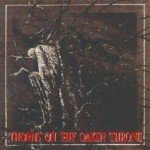 An all too brief EP from Finnish gloomophiliacs Wings, as ephemeral as the tortured existence that is enshrouded in these twisted sounds of darkness-raped melody. Almost like the missing tracks from Cartilage’s cult classic ‘The Fragile Concept of Affection’, this continuation goes further to explore the sombre moods of songs like ‘Why Do I Watch The Dawn?’, in their Replicant-like reflections upon the transience of a human existence placed between the crushing, vice-grip of nothingness. Wings don’t peturb the balance of pace of slower, more expansive lakes of hypnotic melody that made up Cartilage’s contribution to their split with Altar, but there is greater focus on creating a doomier atmosphere, leaving no space for the grinding riffs of the past incarnation – a technique that parrelleled the Swedish Unleashed on their first album. Instead, an older treatment is given to the bouncier riffs, which could be heard as Punkier passages, but as this EP comes together as a whole to reveal, these bridge the narrative that seems to span across both songs with a mid-pace tempo in which the drawn out melodies pass through towards an expressive, quite neoclassical riff of totality – encompassing all the hopes that are weighed down by all the sorrows in the journey towards death. This poem in two parts is a valuable recording of Death Metal history, as a valid direction for these Finnish musicians to have taken following the demise of Cartilage, with all their weird melodic knowledge as baggage. -ObscuraHessian
An all too brief EP from Finnish gloomophiliacs Wings, as ephemeral as the tortured existence that is enshrouded in these twisted sounds of darkness-raped melody. Almost like the missing tracks from Cartilage’s cult classic ‘The Fragile Concept of Affection’, this continuation goes further to explore the sombre moods of songs like ‘Why Do I Watch The Dawn?’, in their Replicant-like reflections upon the transience of a human existence placed between the crushing, vice-grip of nothingness. Wings don’t peturb the balance of pace of slower, more expansive lakes of hypnotic melody that made up Cartilage’s contribution to their split with Altar, but there is greater focus on creating a doomier atmosphere, leaving no space for the grinding riffs of the past incarnation – a technique that parrelleled the Swedish Unleashed on their first album. Instead, an older treatment is given to the bouncier riffs, which could be heard as Punkier passages, but as this EP comes together as a whole to reveal, these bridge the narrative that seems to span across both songs with a mid-pace tempo in which the drawn out melodies pass through towards an expressive, quite neoclassical riff of totality – encompassing all the hopes that are weighed down by all the sorrows in the journey towards death. This poem in two parts is a valuable recording of Death Metal history, as a valid direction for these Finnish musicians to have taken following the demise of Cartilage, with all their weird melodic knowledge as baggage. -ObscuraHessian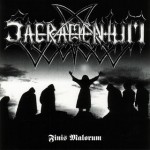 A true gem, Sacramentum’s first EP showcases a style that is melodic and emotive in a manner not unlike countrymen Dissection and Unanimated. Epic, catchy and well crafted compositions are multi-layered not unlike Emperor minus keyboards, the rush of guitar notes being vibrant and lively, with little emphasis towards a rhythmic expectation, as one would expect with most heavy metal and hard rock music. Simultaneously moody yet without being whiny, this early release by Sacramentum showcases a band who are able to master quality control and bring the best out of all the elements that define their music. Alongside At The Gates, artistically the finest Swedish metal act of the 1990′s. -Pearson
A true gem, Sacramentum’s first EP showcases a style that is melodic and emotive in a manner not unlike countrymen Dissection and Unanimated. Epic, catchy and well crafted compositions are multi-layered not unlike Emperor minus keyboards, the rush of guitar notes being vibrant and lively, with little emphasis towards a rhythmic expectation, as one would expect with most heavy metal and hard rock music. Simultaneously moody yet without being whiny, this early release by Sacramentum showcases a band who are able to master quality control and bring the best out of all the elements that define their music. Alongside At The Gates, artistically the finest Swedish metal act of the 1990′s. -Pearson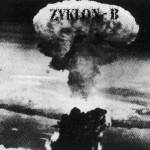 Fast, raging black metal with the fury of early Deicide and the sharp harmonizing typical of Mayhem and Immortal’s ‘Pure Holocaust’ come head to head, in the guise of technically precise, abrupt songs. Shouty hardcore vocals, warm synth overlaps, a near constant blastbeat and anti-humanist lyrical concepts indicate a desire by known Norwegian musicians to advance the aggression of the black metal style and shift it’s idealogical focus away from romantic nostalgia. This brief E.P. lacks the spark of Norway’s foundational acts, but remains an influential statement of the subgenre. -Pearson
Fast, raging black metal with the fury of early Deicide and the sharp harmonizing typical of Mayhem and Immortal’s ‘Pure Holocaust’ come head to head, in the guise of technically precise, abrupt songs. Shouty hardcore vocals, warm synth overlaps, a near constant blastbeat and anti-humanist lyrical concepts indicate a desire by known Norwegian musicians to advance the aggression of the black metal style and shift it’s idealogical focus away from romantic nostalgia. This brief E.P. lacks the spark of Norway’s foundational acts, but remains an influential statement of the subgenre. -Pearson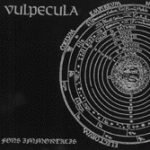 Who would have expected Chuck Keller to open the gates to very Orion itself after the folding of the aggressor squad par excellence Order from Chaos? As if a continuation of the promise of the astrological and alchemistic symbolism of the former bands’ lyrics, Vulpecula slows it down and strums soothing, yet vigorous melodies while the vocals multiple into wraith-like dimensions of rhythmic rasps and Keller’s leads occasionally burst into the aggressive, spasmous flight of an eagle amidst a thunderstorm. “Phoenix of the Creation” delves into exercises in authentic space synth, while “The First Point of Aries” harkens to the mid-paced woodland meditations that the Norwegians used to record at Grieghallen. Occasionally slightly hindered by the band’s eagerness to cram all the influences from Schulze to black metal into one short EP, the mere richness of it invites the ears to take their pleasure at will from the Babylonian garden of ponderous and prestigious movements that are achingly attractive and acceptable in their innocent refusal to complicate things with dissonance. Credit also goes for the lead guitar efforts of Keller on their traditional melodious injection which easily avoids the neutrality of more pop oriented bands trying to do the same. Almost like envisioning a “new age” approach to the genre, Vulpecula is an alien saucer amidst the orbit bound technologies of “progressive” death metal. -Devamitra
Who would have expected Chuck Keller to open the gates to very Orion itself after the folding of the aggressor squad par excellence Order from Chaos? As if a continuation of the promise of the astrological and alchemistic symbolism of the former bands’ lyrics, Vulpecula slows it down and strums soothing, yet vigorous melodies while the vocals multiple into wraith-like dimensions of rhythmic rasps and Keller’s leads occasionally burst into the aggressive, spasmous flight of an eagle amidst a thunderstorm. “Phoenix of the Creation” delves into exercises in authentic space synth, while “The First Point of Aries” harkens to the mid-paced woodland meditations that the Norwegians used to record at Grieghallen. Occasionally slightly hindered by the band’s eagerness to cram all the influences from Schulze to black metal into one short EP, the mere richness of it invites the ears to take their pleasure at will from the Babylonian garden of ponderous and prestigious movements that are achingly attractive and acceptable in their innocent refusal to complicate things with dissonance. Credit also goes for the lead guitar efforts of Keller on their traditional melodious injection which easily avoids the neutrality of more pop oriented bands trying to do the same. Almost like envisioning a “new age” approach to the genre, Vulpecula is an alien saucer amidst the orbit bound technologies of “progressive” death metal. -Devamitra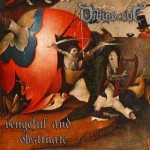 The first new release that’s being reviewed for 2010 and it’s already giving distinct impressions of the kind of quality that made 1993′s ‘As the Angels Weep’ a genuinely classic EP. Divine Eve keeps the form of this new material far simpler, stripping away the Death Metal-infected sludginess for a more rudimentary homage to early brutal music like Celtic Frost. ‘Vengeful and Obstinate’ makes its own unique statement by honing in on the nihilistic and warlike spirit of the Swiss legend’s To Mega Therion magnum opus, even invoking the same battle-horns on ‘Ravages of Heathen Men’ that bring focus to the beauty of conflict and strife in a meaningless universe. The varied tempo of grinding riffs set to a dirty bass guitar adds to the atmosphere of struggle as an outlet for this primitive, instinctual response to the world. ‘Whispers of Fire’ being the exception on this EP for the constantly up-tempo pace, it’s a pleasure to hear such slow and sludgy music churning visions of the darker universe beyond our lives of comfort and languish. The final and most devastating touch of ‘Vengeful and Obstinate’ is how Divine Eve makes extensive use of the piercing tone that Xan’s grating guitar setup produces, highlighting the spiral passage of powerchords by revealing their hidden, melodic architecture, ingenuiously managing to explain and enhance this rugged approach of legendary lineage. It’s about time the band produced a full-length and they’ve proved that they possess more than enough knowledge of unholy riffcraft to do so. -ObscuraHessian
The first new release that’s being reviewed for 2010 and it’s already giving distinct impressions of the kind of quality that made 1993′s ‘As the Angels Weep’ a genuinely classic EP. Divine Eve keeps the form of this new material far simpler, stripping away the Death Metal-infected sludginess for a more rudimentary homage to early brutal music like Celtic Frost. ‘Vengeful and Obstinate’ makes its own unique statement by honing in on the nihilistic and warlike spirit of the Swiss legend’s To Mega Therion magnum opus, even invoking the same battle-horns on ‘Ravages of Heathen Men’ that bring focus to the beauty of conflict and strife in a meaningless universe. The varied tempo of grinding riffs set to a dirty bass guitar adds to the atmosphere of struggle as an outlet for this primitive, instinctual response to the world. ‘Whispers of Fire’ being the exception on this EP for the constantly up-tempo pace, it’s a pleasure to hear such slow and sludgy music churning visions of the darker universe beyond our lives of comfort and languish. The final and most devastating touch of ‘Vengeful and Obstinate’ is how Divine Eve makes extensive use of the piercing tone that Xan’s grating guitar setup produces, highlighting the spiral passage of powerchords by revealing their hidden, melodic architecture, ingenuiously managing to explain and enhance this rugged approach of legendary lineage. It’s about time the band produced a full-length and they’ve proved that they possess more than enough knowledge of unholy riffcraft to do so. -ObscuraHessian

